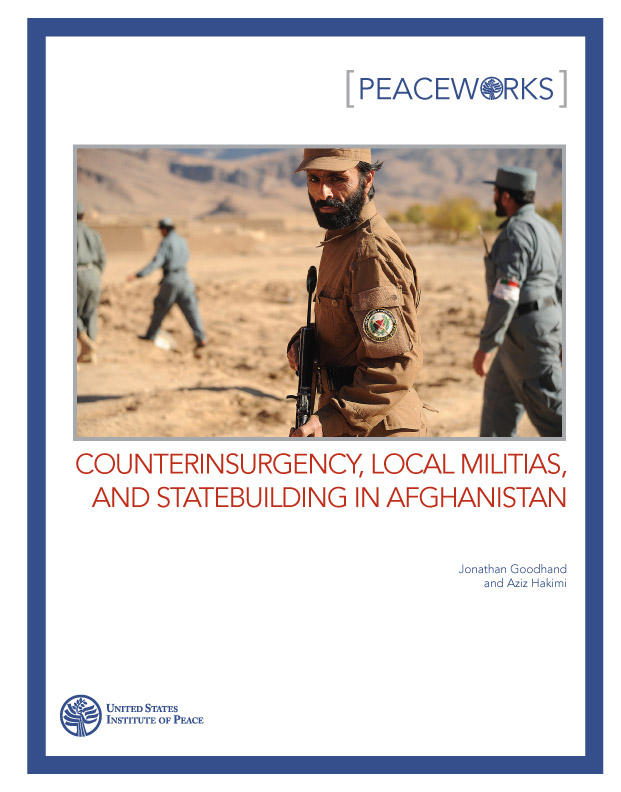Arming local defense forces in Afghanistan has had mixed and often perverse effects on the security of local populations, according to this study on the role and impact of the Afghan Local Police in three provinces. These findings suggest that, as international forces draw down, the ALP will require stronger state oversight and absorption into the national police force.
Summary
- International intervention in Afghanistan at the end of 2001 marked less the beginning of a war-to-peace transition and more a new phase of an ongoing conflict.
- The fundamental contradiction has been attempting to build peace while fighting a war.
- Post-2001 Afghanistan exemplifies the deleterious effects of exogenous, militarized statebuilding, which has undermined peacebuilding and statebuilding at many levels.
- The paradox of counterinsurgency doctrine in Afghanistan is that its success depends on a high-capacity regime to put it into practice but that exogenous statebuilding prevents the emergence of such a regime in the first place.
- The growth of the insurgency, the failures of top-down statebuilding, and the influence of counterinsurgency doctrine all help explain the proliferation of militias since the mid-2000s.
- Militias are formed to engage in protective violence but often mete out predatory and abusive violence.
- No necessary or straightforward connection exists between militia formation and state breakdown or collapse.
- Preceded by several other militia programs, the Afghan Local Police (ALP) emerged as a U.S.-funded effort.
- ALP militias are less a threat to national-level stability and more a danger that after 2014 an oversized and unevenly trained national armed force will fragment into numerous competing militias.
- Outsourcing community protection and defense to the ALP—rather than extending state power and legitimacy—may have had the opposite effect.
- The ALP will not go away, has already left a long-term legacy that Afghans will have to deal with, and is symptomatic of a wider deficiency of the post-2001 intervention.
- The long-term future of the ALP program remains uncertain. If it continues, however, it should not be expanded. Stronger state oversight and support are needed, and plans should be developed to facilitate the absorption of the ALP into the Afghan National Police (ANP).
About the Report
Much international effort and funding have focused on building and bureaucratizing the means of violence in Afghanistan. At the same time, parallel government and NATO experiments have armed local defense forces, including local militias, under the Afghan Local Police (ALP) program to fight the insurgency and provide security at the local level. This report—which is based on a year’s research in Kabul and the provinces of Wardak, Baghlan, and Kunduz—seeks to understand the role and impact of the ALP on security and political dynamics in the context of ongoing counterinsurgency and stabilization operations and the projected drawdown of international troops in 2014 .
About the Authors
Jonathan Goodhand is a professor of conflict and development studies in the Development Studies department at the School of Oriental and African Studies (SOAS) at the University of London. His research interests include the political economy of aid, conflict, and postwar reconstruction, with a particular focus on Afghanistan and Sri Lanka. Aziz Hakimi is a PhD candidate at SOAS. His dissertation focuses on the ALP in relation to Afghan statebuilding.
